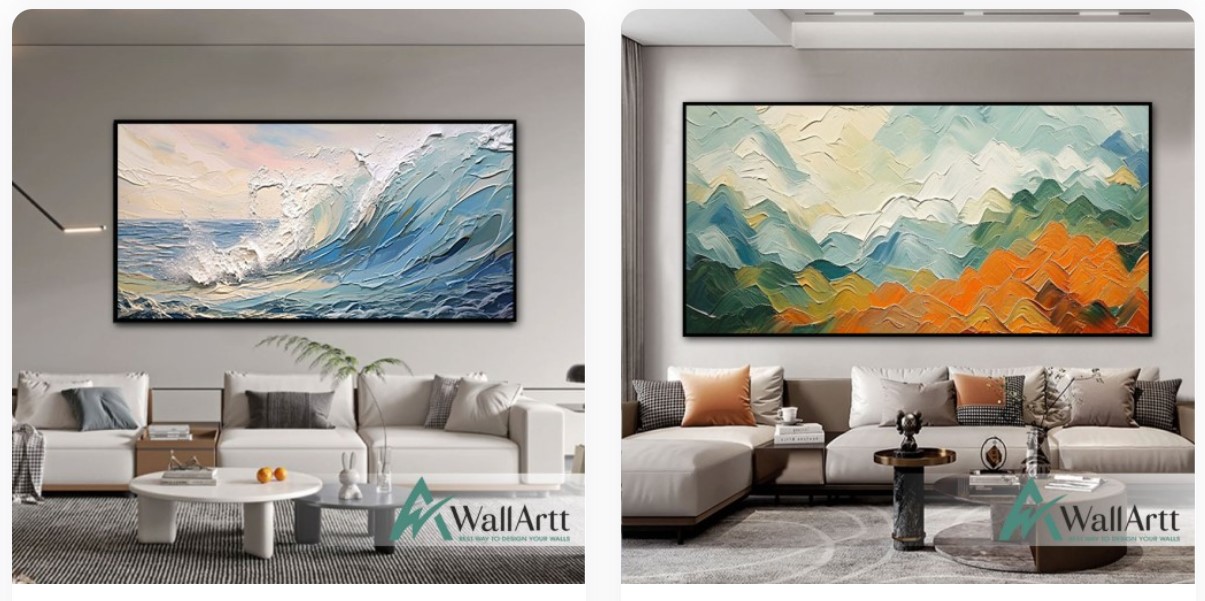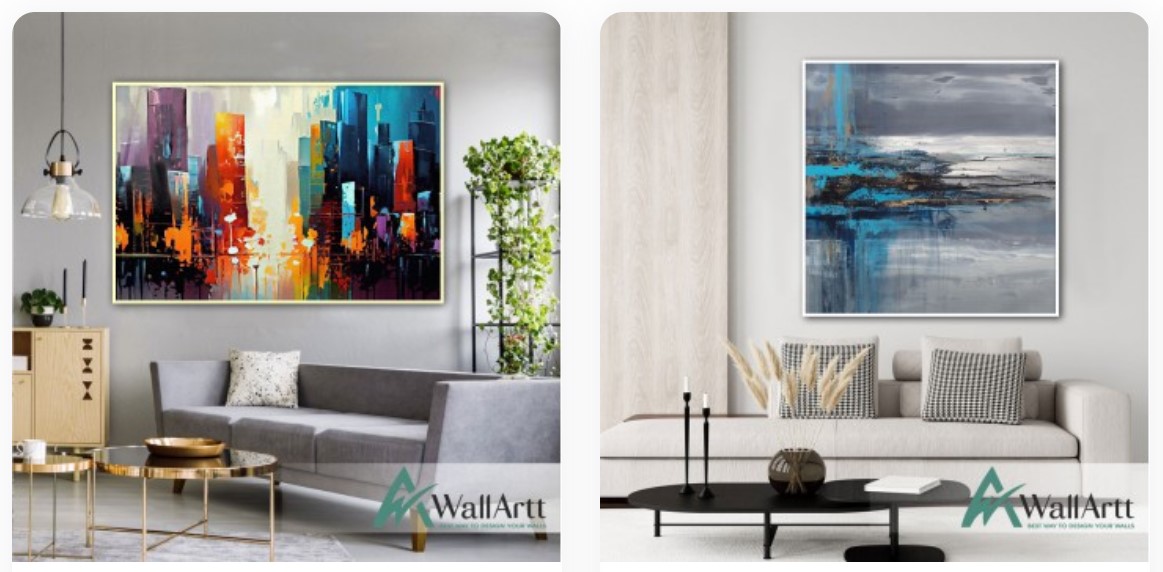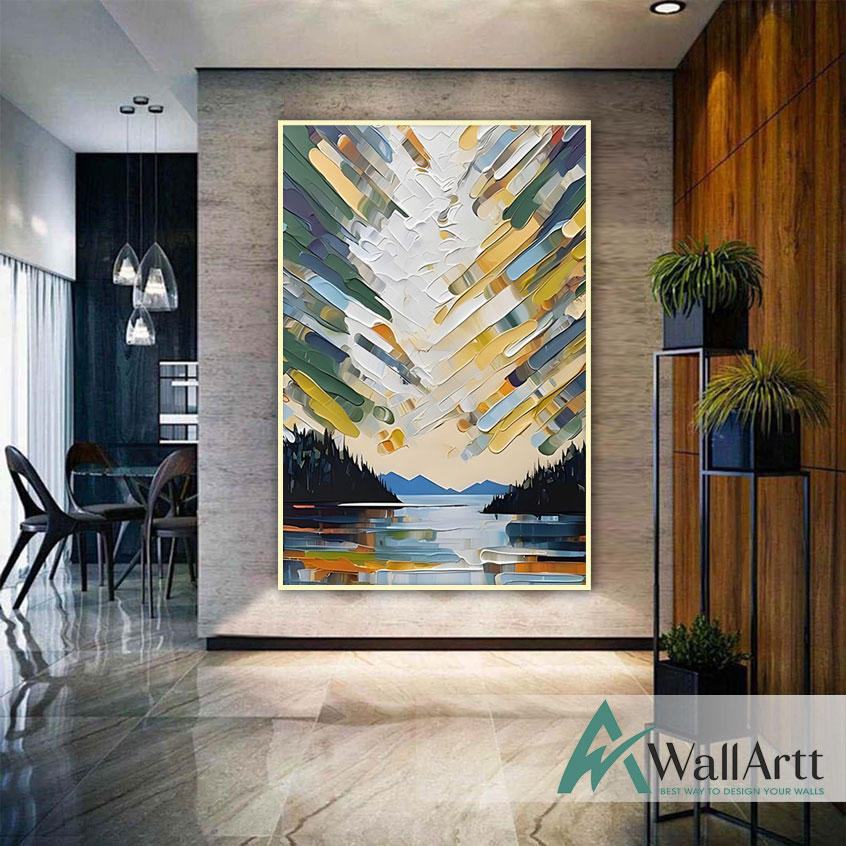Selecting wall art that perfectly mirrors your individual style transcends the simple act of choosing pieces that match your aesthetic preferences; it involves a profound exploration into the core of your personality, illuminating how it influences the atmosphere and appearance of your living spaces. This form of self-expression extends far beyond the realm of simple decoration. It becomes a vivid declaration of your identity, embedding your essence into the very walls of your home. As you embark on the journey to assemble a collection that truly resonates with your unique essence, you engage with various crucial elements. This includes a deep understanding of your personal aesthetic, an appreciation for the narratives you desire to weave through your decor, and the recognition of how each piece contributes to a cohesive and expressive interior narrative.
Understanding Your Aesthetic
Embarking on the journey to discover wall art that aligns flawlessly with your personal style necessitates a deep dive into the nuances of your aesthetic preferences. This exploration is not just about identifying what pleases your eye but understanding the underlying reasons why certain visuals strike a chord with you. Are you captivated by the boldness and vivacity of modern abstracts, or does your soul find peace in the gentle whispers of minimalist landscapes? Perhaps your inclination towards contemporary pieces speaks to a love for innovation and forward-thinking, while a fondness for traditional art may reflect a reverence for history and time-honoured techniques. This process of introspection is not merely a step but a journey in itself, setting the cornerstone for a curatorial process that is as fulfilling as it is enlightening. By delving into the depths of your aesthetic inclinations, you ensure that every piece of wall art you select does more than just adorn your walls—it acts as a mirror, reflecting the multifaceted dimensions of your taste and personality. This alignment guarantees that your living space becomes a sanctuary, a visual testament to the essence of your being, curated meticulously through art that resonates with the core of who you are.
The Significance of Colour and Texture
The choice of colour in wall art is not merely a matter of aesthetic preference; it's a strategic decision that influences the atmosphere and emotional tone of a room. Colours have the power to transform spaces, with cooler tones bringing a sense of tranquillity and warmer hues creating a vibrant, energetic environment. For instance, a canvas dominated by soft blues and greens might introduce a calming effect, ideal for bedrooms or study areas, while dynamic reds or yellows inject vitality into living spaces or kitchens. The psychological impact of these colours plays a crucial role in aligning the art with the intended mood of each room.
Texture, on the other hand, introduces an element of tactility that can make artwork leap off the wall and command attention. The texture can be physical, through the use of techniques such as impasto, where paint is laid on an area of the surface in very thick layers, or visual, created through intricate patterns and colour variations that give the illusion of depth. The presence of texture in art adds a layer of complexity, inviting viewers to come closer and engage with the piece on a more intimate level. It’s this interplay between colour and texture that enriches a space, making it more visually engaging and emotionally resonant.
The Role of Scale and Proportion
Understanding the scale and proportion of wall art in relation to the space it occupies is essential for creating balance within a room. An artwork's impact is significantly affected by its size and how it interacts with the furniture, architectural features, and other decorative elements within a space. For example, a singular, expansive piece of art can anchor a room, acting as a statement piece that captures attention and defines the room's aesthetic direction. Such pieces work exceptionally well in areas with ample wall space, like over a sofa in a living room or above a bed in a master suite.
Conversely, a series of smaller artworks can be arranged to create a gallery wall, offering a narrative or thematic exploration that reflects personal tastes, travels, or life milestones. This approach allows for a more personalised touch, enabling the display of multiple artworks that, while individually smaller, collectively tell a cohesive story. When arranging a gallery wall, the spacing and alignment of the pieces are as important as the artworks themselves, requiring a thoughtful consideration of how each piece relates to the others in terms of size, colour, and subject matter.
Creating a Dialogue Between Art and Space
The relationship between wall art and its environment is a dynamic interplay that requires thoughtful consideration. It's about more than matching colours or styles; it's about creating an atmosphere that enhances the living experience. For instance, in a room dedicated to relaxation, such as a bedroom or reading nook, the choice of art should contribute to a peaceful ambiance, possibly through serene landscapes or gentle abstracts. On the other hand, a communal space like the living room, where families gather and guests are entertained, may benefit from more vibrant and engaging pieces that stimulate conversation and interest.
This dialogue extends to the architectural elements and the furniture within the space. A piece of art should not only be in harmony with the colour scheme and decor style but should also respect the proportions and features of the room. A grand, ornate piece may overshadow a minimalist setting, just as a small, understated work might be lost in a room rich in detail and texture. The key is to achieve balance, allowing the art to stand out while ensuring it feels at home within its surroundings. This symbiosis between art and space elevates the aesthetic and emotional appeal of a room, transforming it into a cohesive and harmonious environment.
Personal Narratives and Emotional Resonance
Art has the unique ability to encapsulate moments, memories, and emotions, making it a powerful medium for personal expression. The pieces we choose to display in our homes are often imbued with stories and significance that go beyond aesthetic appeal. A painting picked up during a memorable trip, for instance, serves as a daily reminder of that experience, enriching our living space with personal history and sentiment. Similarly, artwork by a favoured artist can signify admiration for their technique or message, fostering a connection that is both intellectual and emotional.
The selection of such art involves introspection and an awareness of what truly moves us. It's about recognising the pieces that consistently draw our attention and evoke a response, whether it be a sense of peace, joy, or contemplation. These reactions are personal markers of what is meaningful to us, guiding our choices in art. By surrounding ourselves with pieces that have personal resonance, we create environments that are not only visually appealing but also deeply reflective of our identities and journeys. This emotional dimension of art enhances our daily lives, making our homes not just places to live but spaces that truly resonate with our personal narratives and experiences.
The Importance of Quality and Craftsmanship
The discerning eye can easily distinguish between a piece of art that's been crafted with dedication and one that's rolled off an assembly line. This distinction is not merely aesthetic but also speaks volumes about the piece's essence and value. In an era where the marketplace is flooded with generic, mass-produced decorations, artworks that exhibit superior quality and craftsmanship stand as testaments to the human capacity for creativity and precision. These pieces, often created over many hours or even months, reflect a commitment to artistry that transcends mere visual appeal, embodying the soul and passion of their creators.
Handcrafted art carries with it the marks of its maker, each brushstroke and contour a signature of its origin. Investing in such pieces not only enhances the aesthetic quality of your space but also contributes to a broader ecosystem of artistry that values skill, tradition, and innovation. By choosing quality and craftsmanship, collectors not only acquire a piece of art but also partake in the preservation and continuation of artistic heritage. This support enables artists to continue their craft, experiment with new ideas, and keep alive techniques that might otherwise fade into obscurity.
Curating a Collection
Embarking on the journey to curate a personal art collection is an exploration of taste, identity, and aesthetic pleasure. This process, inherently slow and introspective, encourages individuals to engage deeply with art, understanding their own responses to different works and what these reactions reveal about their inner world. Beginning with a few pieces that strike a chord within your soul allows for a collection that is not just seen but felt, a visual representation of the nuances of your personality and life experiences.
As the collection grows, it becomes a living narrative, a visual diary that chronicles changes in taste, interest, and understanding. The act of mixing styles, mediums, and historical periods is not just about creating visual diversity but about weaving a complex story that reflects the multifaceted nature of human experience. This eclectic approach to collecting does not rush to fill spaces but savours the search and discovery of artworks that resonate on a profound level, ensuring that each piece contributes to a harmonious but dynamic whole.
A thoughtfully curated art collection thus becomes more than decoration; it is a habitat of personal expression and exploration, offering daily inspiration and joy. It invites conversation, not just about the art itself but about the journeys, memories, and dreams that each piece represents. In this way, the walls of a home transform into galleries of personal discovery, where every artwork is a chapter in the ongoing story of a life richly lived.
The Art of Placement
Finally, the placement of your wall art can significantly impact its effect on a room. Experiment with different arrangements until you find a layout that feels balanced and harmonious. Consider the sightlines in the room and place key pieces where they will be most appreciated. And don’t be afraid to change things up; moving art around can bring fresh energy to a space and allow you to see your collection in a new light.
In the end, choosing wall art that reflects your unique style is an art form in itself, one that requires time, thought, and a deep understanding of your own aesthetic and emotional preferences. By considering these aspects, you can create a space that not only looks beautiful but also feels deeply personal and resonant with your individual identity.



